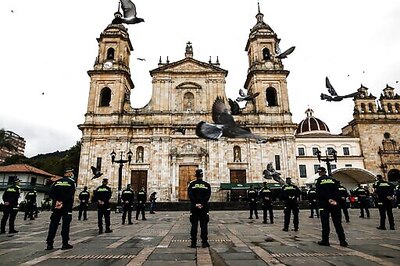Unlike Bollywood, Bombay Rose Doesn't Hide Social Issues Surrounded by Its Characters: Gitanjali Rao

views
It took actor-filmmaker Gitanjali Rao over six years to complete Bombay Rose, her first animated feature film that is competing at the India Gold section of the Jio MAMI 21st Mumbai Film Festival. With an aim to mark a major paradigm shift in Indian animation, Rao has taken upon herself to fight against preconceptions of the moving image art making as a form in the country.
Her film Bombay Rose, based on true events, focuses on intimate, occasionally difficult reactions to systematic injustice. The film makes striking use of non-linear storytelling to create a sense of unravelling identity. With characters like— a dancer who works at an illegal nightclub, a Kashmiri Muslim youth orphaned by the military and a bigoted gangster— Rao’s vision is less children’s fantasy and more gritty realism.
In a freewheeling chat, she tells us what it was like working on her debut animated feature film.
Excerpts:
The story of Bombay Rose holds up a mirror to society discriminating against minor religious groups. We don’t usually see such ideas in animation in India.
Animation has always been my medium for telling stories. All the films that I have ever made has been in animation. So for me there was no question of changing animation to any other medium. This is a phenomenon only in a place like India where you think all animation is for children because we have been bombarded by Disney and Pixar. But if you see the rest of the world which I did when I learnt animation and travelled with my short films. You have something called author-driven films like Persepolis, Waltz with Bashir or even what Hayao Miyazaki is doing out there. You’re telling stories which are socially relevant and which might be tough to be told in a medium like live-action, and therefore they are told in animation.
The subjects that you chose to deal with in Bombay Rose— immigration, religious conflict, sexism, are not dared to explore by many filmmakers in the country.
It’s from personal experience. If you meet a rickshaw driver or those people living on the streets in Bombay and start talking to them, you’ll know their stories are filled with the problematic social system that we have offered them. It’s not that I’m trying to tell a story which has social issues in it. I’m just trying to tell a story about a bunch of people who cannot live in the privileged kind of life that we do— insulated from the social stigmas and problems that exist in this country.
And, 70-80 per cent of the people are living like that. A large part of the society is terribly influenced by what people are offered by the government, what caste they belong to, what religion they belong to, how it works in terms of the orthodoxy within the society. So If I’m telling a story about characters that are surrounded by social issues I’m not going to remove those social issues which Bollywood does all the time and tell a fake fantasy entertainment.
In your film, characters flaunt their religious symbols like taabeez, tilak and rudraksha. Were you not apprehensive that it might contribute to stereotyping?
One thing that happens in animation unlike live-action is that your characters don’t change clothes. Through the film the way that you can depict your character is without taking their clothes off at all. So stereotypifying is in-built in animation in terms of character. Look at Mickey Mouse or Snow White. That is a part of the medium. Apart from that, Salim is a Kashmiri Muslim and he just runs away from home because of a tragedy and he comes to Bombay and what he has been wearing is this typical taabeez. So for me, that is not a statement, it’s a reflection of how I’ve seen Kashmiris. About rudrakhsha and red tilak, I believe these characters are a plenty in Bombay. I would be dishonest if I take the characters and I say, ‘Oh, the rudraksha is going to create a problem so I’m going to get it out of the picture.’
Were there any limitations in your mind while developing the story?
I wrote the story with complete freedom. I didn’t have the development fund. I chose to do that deliberately because when you do have a development fund, it does come with constraints. All I did was I invested in the time and the money myself and wrote with complete freedom. And then, I approached the producers, saying, ‘This is the story that I want to tell and if you have the courage and would want to back then fine.’ A lot of them did not. Later, Cinestaan stepped in on a locked script.
Do you think such films are gaining currency among filmmakers now?
I live with hope and I’m very optimistic. We need to make a lot more animation films. Not just one film will be able to change the people’s perspective of— ‘does the Indian audience accept the Indian animation which is not for children alone?’




















Comments
0 comment